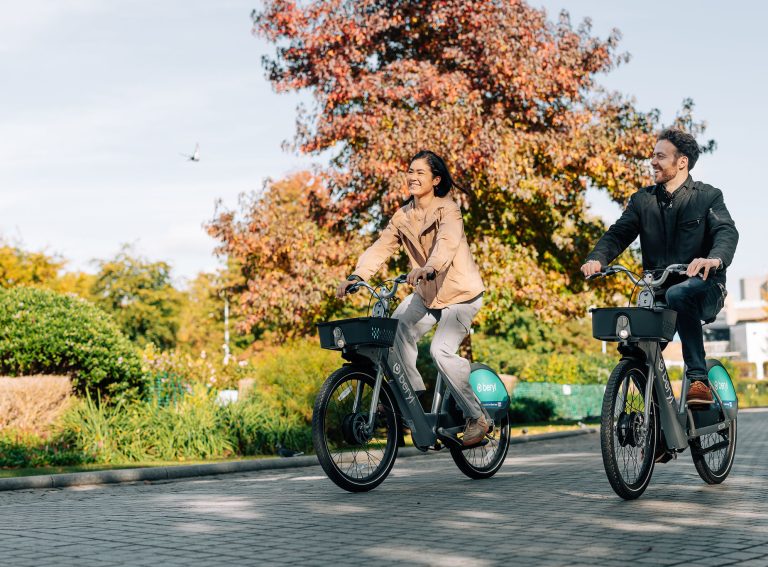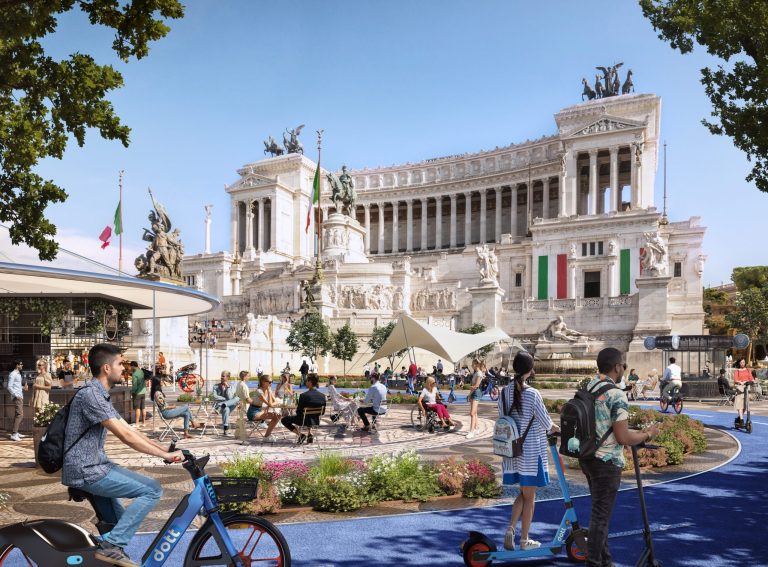Author: Harry Maxwell, B2B Growth Marketer at Zoov
Long-term leasing is perhaps the biggest trend in micromobility today. Companies like Swapfiets have been making this kind of offer available to users since 2014 but, in the last 12 to 18 months, it has gone wild.
Now companies like Zygg in Canada, DANCE in Germany and Bloom in France are combining the best of micromobility and vehicle ownership.
What is long-term leasing?
Long-term leasing (LTL) is when a company provides its users with a personal vehicle – such as a bike or scooter – with a package of dedicated customer care, maintenance and insurance for a fixed monthly fee.
The idea of subscriptions is not new to micromobility operators. Schemes like ‘Lime Prime’ and ‘dott passes’ are attractive to many users, but they aren’t as effective as they could be. Whilst these subscriptions offer unlimited rides to users for around £40 a month, LTL competitors offer a personal electric bike, maintenance and insurance for around £50 a month.
Benefits for users
There are three key reasons why a user would prefer their own vehicle to an ‘infinity’ free-floating scooter and/or bike subscription:
- Accessibility: Users will always have access to a vehicle when they want it. They can rest assured their bike or scooter will be where they left it, and it will have sufficient battery for their trip. They never have to rely on vehicle uptime and rebalancing to get where they need to go.
- ‘No limit’ riding: Users can travel outside the geofenced zones of the city, making it a very attractive offer for people that live on the outskirts of cities – people who would be very unlikely to purchase a traditional mobility subscription.
- Augmented user experience: when micromobility companies deliver a long-term leasing service – an ‘app-first’ experience – they are certain to give users a much more personalised experience. Users can see the vehicle on their map, unlock it with their smartphone, see how far they’ve travelled, and potentially win rewards for continued usage.
Benefits for operators
Running an LTL scheme can be extremely lucrative for an operator.
- Tackle a new market: With an existing presence in a city, an LTL project can attract new kinds of users. You can attract new demographics and, as previously mentioned, those that would usually live outside of your area of operations.
- Boost MRR (monthly recurring revenue): Like an ‘infinity pass’ you will boost your user retention from month to month. Unlike an ‘infinity’ pass, an LTL scheme is far more likely to keep users subscribed over winter months (it’s harder to end dependency on a hired vehicle once it has become a habit), and will contribute more to brand loyalty in the long term.
- Gather more ridership data: With connected vehicles in the hands of LTL users, you can gather trip data to better understand the suburbs, allowing you to see where the demand may lie, and make data-driven decisions on expanding your area of operations.
Check out this extensive guide to find new ways to boost user retention.
How to get started
Whether you’re a new operator looking to attack the LTL market, or an existing ride-sharing operator looking to diversify your business model, there are a few things to consider.
- Identify the right vehicle
Firstly, if you have existing ride-sharing operations, could you give your LTL customers an exceptional experience with your current fleet?
If so, how will you rebrand the vehicles to a) let free-floating users know that they are privatised, and b) use the extra visibility to promote the service?
When looking for a new vehicle, on the other hand, you must always put the level of comfort and ease of use above anything else. What will attract users is a fun, light ride that is easy to manoeuvre. It has to feel like it’s theirs.
Does it have an easy-swap battery that is safe for users to use at home?
- Create an attractive offer
Then comes designing the leasing package. You need to figure out what you should market to your users.
- How much should it cost? Should the offer have a fixed end date (e.g. after 9 months)?
- Does it include insurance?
- Will you have 24/7 support?
- What SLA (Service-level agreement) will you offer your users? After how long do you guarantee that you will fix their vehicle in the case it breaks down (e.g. 24 hours)?
- Is there an initial sign up cost to cover the costs of delivering the vehicle and the charger for the battery)?
- Launch a trial
After identifying the offer, you will need to launch a trial in a suitable location. Our recommendation is that you choose a city where you already have operations. You know the city, and users are familiar with your brand.
The surface area of the city is very important. Cities that have large suburban areas outside of the city centre are ideal for long-term leasing – especially if they don’t have extensive transport links. Sometimes, citizens just need a way to get to the station, which could be within a 5-10km ride from their house. Ideal for a trip on an electric bike.
Bloom in Paris
Bloom, founded by an ex-Bird duo, launched their long-term leasing service in Paris this year with Zoov electric bikes.
“Our no-commitment subscription offer combines the security and flexibility of a shared bike with the elegance and exclusivity of a personal bike. We facilitate access to electric bikes by removing the barriers of price, theft and repairs”, said Driss Ibenmansour, CEO of Bloom.
Having launched with 100 bikes initially, they are now planning their expansion. On average, users ride 18km a week on their bikes, and we’re looking forward to seeing more Bloom bikes on the streets!
Zoov designs and manufactures white-label electric bikes, stations and software to take micromobility operators into top gear.











